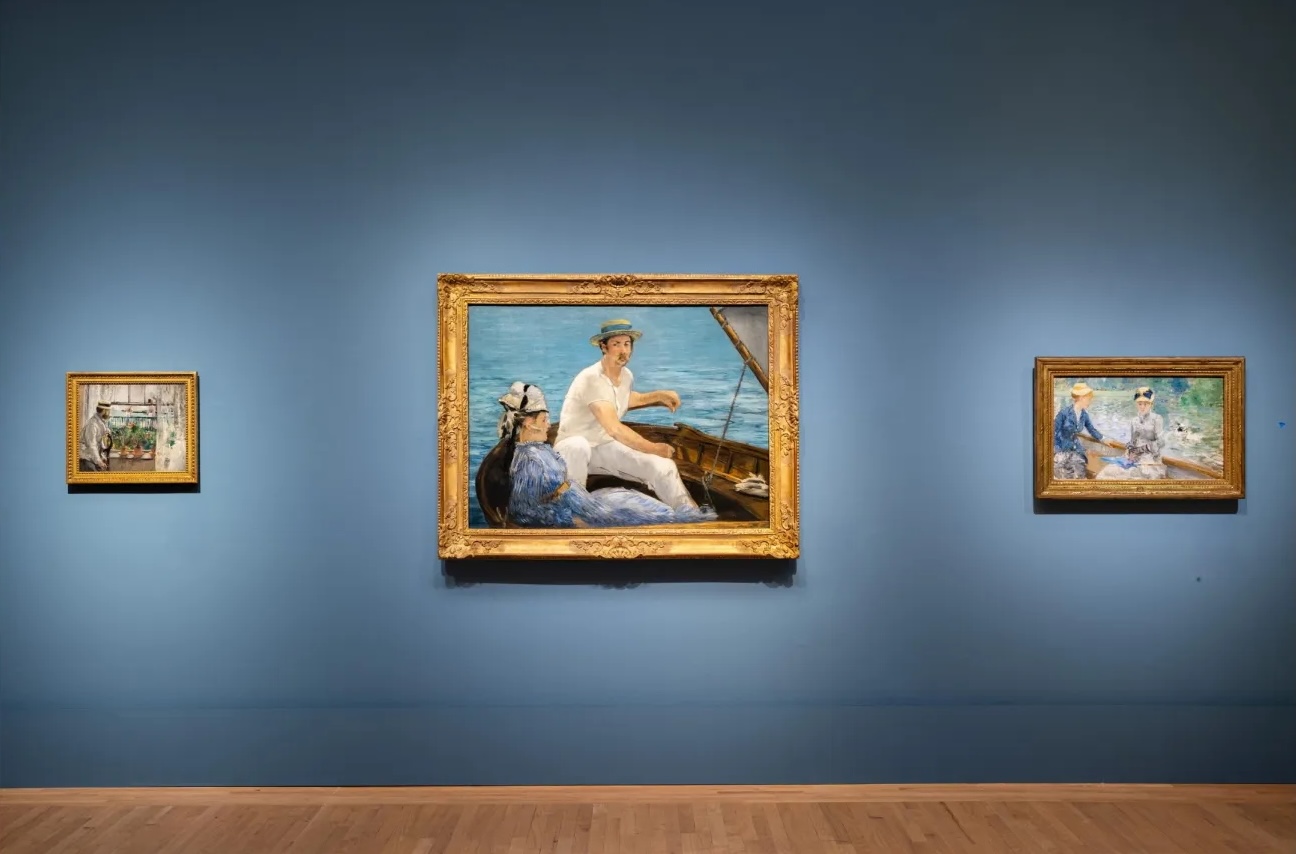A fascinating exhibition at San Francisco’s Legion of Honor, the first of its kind, takes a close look at Édouard Manet and Berthe Morisot, revealing how the major 19th century French painters knew and influenced each other.
“It’s not a case of master and pupil. It’s an exploration of the exchanges between artists at the heart of the Impressionist movement,” said Emily A. Beeny, chief curator of the Legion of Honor, who organized the show, during a preview tour on Wednesday.
Opening on Saturday, “Manet & Morisot” includes about four dozen paintings by Manet (1832-1883), the pivotal Modernist; and Morisot (1841-1895), the female pioneer of the Impressionist movement, loaned from private collections and major institutions including Musée d’Orsay in Paris, the National Gallery in London, the National Gallery of Art in Washington, D.C. and the Norton Simon Art Foundation in Pasadena.
Further describing the exhibit, which runs through March 1, 2026, Beeny said, “The friendship between these two great artists—collaborative and competitive, playful and charged—really did have a determining effect on the course of art history. Its story is written in their pictures. Considering them side by side, we watch it all unfold: their shared interests and struggles, their mutual influence and understanding.”
Taking up several downstairs gallery rooms, the exhibition, which follows the artists’ 15-year association, is arranged chronologically. It begins with 1868-69 “The Balcony,” the first of many paintings in which Morisot modeled for Manet, who was nine years her senior.
At the time, Manet, in his 30s, was a studio artist famous for provocative figures (nudes in “Olympia” and “The Luncheon on the Grass”) who planned and reworked his thickly coated canvases. On the other hand, Morisot was an up-and-coming student who painted outdoors, producing landscapes with free, open brushstrokes.
The exhibition includes a variety of portraits of Morisot by Manet, including the “sexy” 1872 “Berthe Morisot with a Bouquet of Violets,” a contrast to 1874’s “Berthe Morisot with a Fan,” his final picture of her, painted after she married to his brother Eugène.
Through the years, Manet began to show increasing admiration for Morisot’s work. A show highlight is “The Four Seasons,” a series of paintings of attractive French women of similar style and dimension, each corresponding to season. Morisot created “Summer” and “Winter” in 1880. Manet, after witnessing her success, went on to paint “Spring” in 1881, and later, “Autumn,” which was incomplete at his death, but revealed in 1884. “It’s really a thrill to see them on the same wall,” said Beeny, noting that the paintings are on display together for the first time in this exhibit.
Beeny also showed examples of how some of Manet’s pictures began to look like they were made by Morisot. For example, Morisot’s “Summer’s Day” and Manet’s “Boating” both feature two figures, one looking forward, one in profile, both positioned on the vessel in a similar manner. Manet, she said, reworked paint strokes in the reclining woman’s dress, giving the painting a more Impressionistic feel.
Both artists painted Morisot’s young daughter Julie, pictured with a watering can in 1882 paintings. In Manet’s more mysterious, unfinished work, the can serves as a prop on which the girl is resting. In Morisot’s more active, lively images, the girl is playing.
Beeny with vigor pointed out the exhibition’s final painting, Morisot’s 1885 self-portrait, calling it “superb, confident and almost defiant,” exemplifying her growth and place in the world of art.
While Beeny said the collected works in “Manet & Morisot” add up to a “dream come true,” one important painting is missing: “The Mother and Sister of the Artist,” in the National Gallery of Art in Washington, D.C. and not available on loan, is the only “one we know that both artists touched.”
“Manet & Morisot” runs Oct. 11, 2025 through March 1, 2026 at the Legion of Honor, 100 34th Ave., San Francisco. Admission is $35 general; $32 senior; $26 student; $20 for ages 6-17 at famsf.org.
The post ‘Manet & Moriset’ at Legion of Honor sheds new light on famed French painters appeared first on Local News Matters.





 Emily Beeny, chief curator of the Legion of Honor, compares Manet’s and Morisot’s varied treatments in depicting Morisot’s young daughter Julie and a watering can. (Leslie Katz/Bay City News)
Emily Beeny, chief curator of the Legion of Honor, compares Manet’s and Morisot’s varied treatments in depicting Morisot’s young daughter Julie and a watering can. (Leslie Katz/Bay City News)

